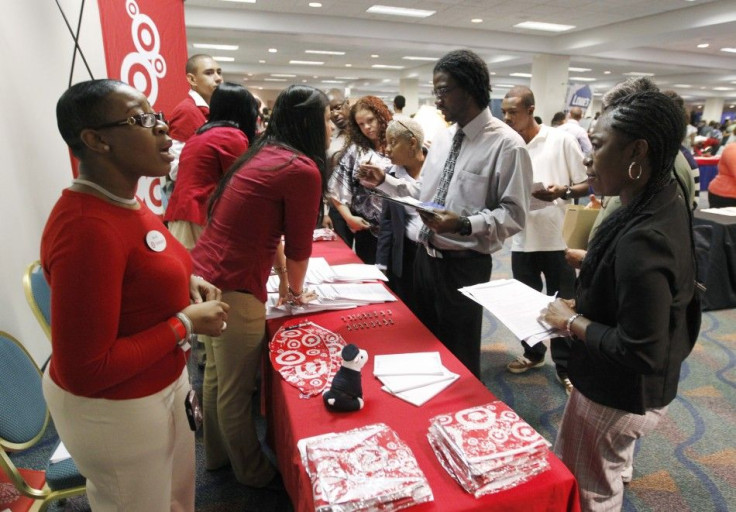Jobless Claims Rise, Skewed Higher By Verizon Strike
ANALYSIS

If one can find a morsel of good news in last week's initial jobless claims, then you're a detective, as claims unexpectedly rose by 5,000 to 417,000, the U.S. Department of Labor announced Thursday.
The one qualifier in the report? The data was skewed higher by an irregular event: claims by striking Verizon phone workers.
That irregular event is the primary reason economists emphasize the more-telling four-week moving average, as it smooths out anomalies due to holidays, strikes, and weather-related layoffs, etc. And that more-telling, less-volatile four-week moving average rose by 4,000 to 407,500.
A Bloomberg survey had expected initial jobless claims to total 405,000. The previous week's total was revised 4,000 higher to 412,000 from the originally estimated 408,000.
One modest bright spot in last week's report: continuing claims declined 80,000 to 3.64 million. A year ago, continuing claims totaled 4.46 million in late August 2010.
Jobless Claims: Sending A Danger Signal?
Still, neither the Verizon-effected claims nor the decline in continuing claims can blot out a major setback in the latest initial jobless claims report. Jobless claims remained above a key threshold: the psychologically-significant 400,000-level.
If jobless continue to rise or remain above the 400,000 level in the weeks ahead, that would signal to economists and investors that commercial activity is decreasing and that most companies are at minimum, unlikely to commit to hiring. What's more, some companies may resume laying off employees.
To be sure, it's important not to draw an overly negative conclusion from the weekly jobless claims report -- jobless claims could drop below 400,000 in the weeks ahead, if hiring picks up in the fall, which it historically has done, but lasrt week's report nevertheless complicates policy makers' task in solving the U.S.'s no. 1 problem: the job deficit.
The nation is the midst of its greatest 'job deficit' since the 1930s. The Economic Policy Institute, a liberal Washington, D.C.-based think tank, says the United States is short a staggering 7 million jobs.
In other words, the U.S. economy has to add 7 million jobs, just to return the workforce to a level at the start of the recession, in December 2007.
What's more, to keep up with population growth, the economy would have to add 11.1 million new jobs to restore the nation to the pre-recession unemployment level of 5.0 percent in December 2007.
To put that in perspective, if the U.S. economy added 300,000 new jobs per month, it would take roughly 37 months to return the nation to that 5.0 percent unemployment rate. During this recovery, the economy has created less than 200,000 new jobs per month.
Labor Market/Economic Analysis: There's no way to deny it: if jobless claims remain above 400,000, that would be bad news for corporate earnings, economc growth, and of course, for job seekers. The United States has an enormous 'jobs deficit.
Further, the grim reality is that, unless the private sector starts hiring en masse immediately, the U.S. unemployment rate will probably rise in the second half of 2011, because budget deficit reduction efforts in Washington will decrease spending and trigger actual government job lay-offs at the federal, state, and local levels.
What's needed now? Policy makers, both public and private, must find ways to create jobs -- the nation's high 9.1 percent unemployment rate is the biggest threat to the economic expansion's durability, to corporate revenue and earnings growth, and, by extension, to U.S. stock prices.
© Copyright IBTimes 2024. All rights reserved.





















